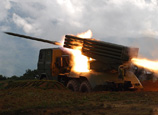
Clean energy facing major bottlenecks
It has not always been smooth sailing for the clean energy sector. A growing number of wind farms in the northeastern, northern, and northwestern regions have suspended operations. The photovoltaic industry is facing many operational problems, and the Fukushima nuclear disaster in Japan again aroused worries about the safety of nuclear power. These factors have added uncertainty of the future of clean energy.
Wang Yeping, vice chairman of the SERC, said that China has made remarkable achievements in clean energy power generation, but is also facing major bottlenecks in this regard.
Wang believes that China’s wind power industry is facing five major problems.
First, uncoordinated wind power and power grid planning has limited certain regional power grids’ ability to accommodate wind power.
Second, uncoordinated construction of wind farms and power grids has led to the suspension of wind farms in some regions.
Third, certain regions have only limited room for wind power usage, and are unable to transport excess wind power to other regions.
Fourth, certain regions have serious problems in peak shaving.
Fifth, there is still a lack of sound market and power coordination mechanisms for promoting wind power usage.
Clean energy power generation enjoys bright prospects
China has maintained stable energy supplies, adjusted its energy structure, and coped with climate change thanks to clean energy. However, the proportion of clean energy consumption in the country’s total primary energy consumption is still at a medium level in the world. As of the end of 2011, its non-fossil energy consumption only accounted for 8 percent of primary energy consumption.
According to the 12th Five-year Plan for Renewable Energy, China will increase its installed capacity of wind power by more than 70 million kilowatts and solar power installed capacity by more than 20 million kilowatts during the 12th Five-Year Plan period (2011-2015).
The capacity of small-scale solar power generation units will increase more than 10 million kilowatts. The country plans to increase the installed capacity of wind and solar power to more than 100 million kilowatts and 21 million kilowatts by 2015, and eventually lift them to 200 million kilowatts and 50 million kilowatts respectively.

Read the Chinese version: 清洁发电减少煤耗3.5亿吨
Source: People's Daily
















 'Sister House' case urges efforts in combating corruption in affordable housing
'Sister House' case urges efforts in combating corruption in affordable housing


![]()
